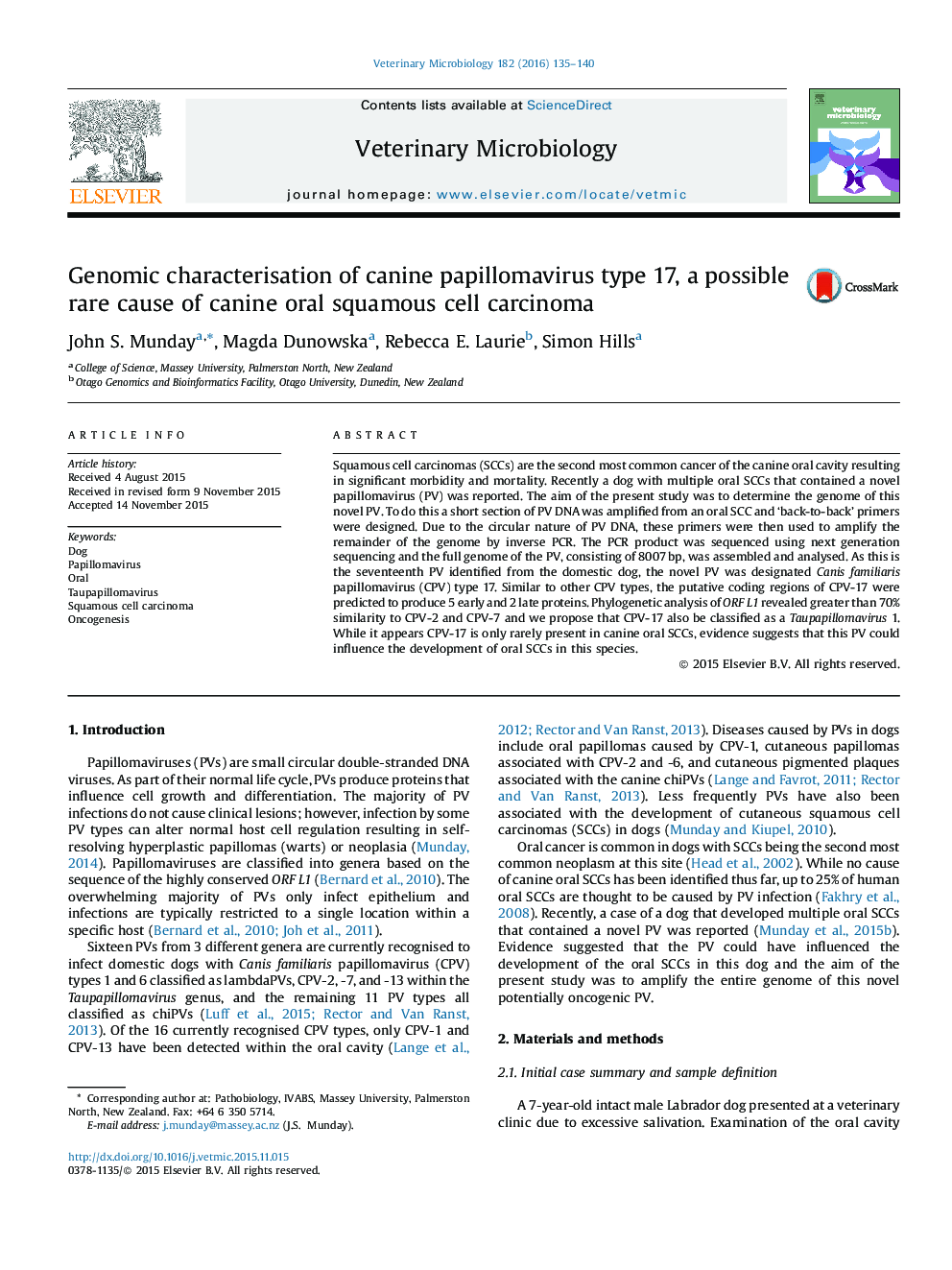| کد مقاله | کد نشریه | سال انتشار | مقاله انگلیسی | نسخه تمام متن |
|---|---|---|---|---|
| 2466493 | 1555341 | 2016 | 6 صفحه PDF | دانلود رایگان |
• Oral squamous cell carcinomas are common cancers of dogs of unknown cause.
• A novel papillomavirus was detected in multiple oral squamous cell carcinomas from a dog.
• The complete genome of the papillomavirus was determined.
• Phylogeny reveals the papillomavirus is a species 1 taupapillomavirus.
• A classification of Canis familiaris papillomavirus (CPV) type 17 is proposed.
Squamous cell carcinomas (SCCs) are the second most common cancer of the canine oral cavity resulting in significant morbidity and mortality. Recently a dog with multiple oral SCCs that contained a novel papillomavirus (PV) was reported. The aim of the present study was to determine the genome of this novel PV. To do this a short section of PV DNA was amplified from an oral SCC and ‘back-to-back’ primers were designed. Due to the circular nature of PV DNA, these primers were then used to amplify the remainder of the genome by inverse PCR. The PCR product was sequenced using next generation sequencing and the full genome of the PV, consisting of 8007 bp, was assembled and analysed. As this is the seventeenth PV identified from the domestic dog, the novel PV was designated Canis familiaris papillomavirus (CPV) type 17. Similar to other CPV types, the putative coding regions of CPV-17 were predicted to produce 5 early and 2 late proteins. Phylogenetic analysis of ORF L1 revealed greater than 70% similarity to CPV-2 and CPV-7 and we propose that CPV-17 also be classified as a Taupapillomavirus 1. While it appears CPV-17 is only rarely present in canine oral SCCs, evidence suggests that this PV could influence the development of oral SCCs in this species.
Journal: Veterinary Microbiology - Volume 182, 15 January 2016, Pages 135–140
